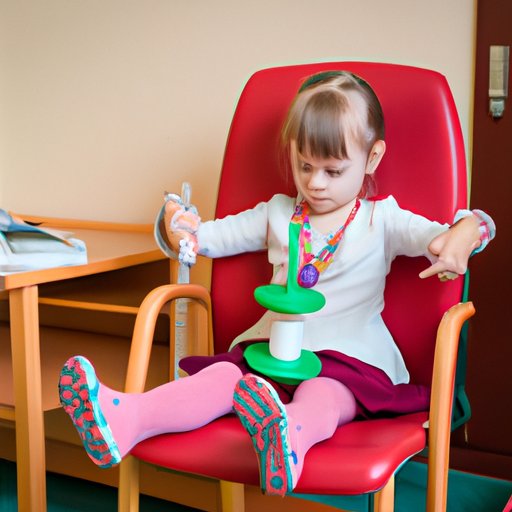
Applied Behavioral Analysis: The Science of Changing Behavior
Applied Behavioral Analysis (ABA) is a type of therapy that focuses on improving specific behaviors to improve overall functioning in individuals. ABA is significant in treating behavior disorders such as autism spectrum disorder, attention-deficit/hyperactivity disorder, and anxiety. In this article, we will explore the principles and benefits of ABA, how it can be used in different settings, and what factors you should consider when deciding if ABA is the right treatment approach for you or your loved one.
Everything You Need to Know about Applied Behavioral Analysis (ABA)
ABA is a therapy based on the principles of behaviorism, which is the study of how changes in an individual’s environment can influence their behavior. The goal of ABA is to teach individuals new skills and behaviors and shape their existing behaviors to be more appropriate. The process of ABA therapy involves breaking down complex behaviors into smaller, more manageable parts. Positive reinforcement is used to encourage positive behaviors, while negative reinforcement is used to discourage unwanted behaviors.
The history of ABA dates back to the 1960s, when it was first developed as a treatment for autism spectrum disorder. Since then, ABA has been used in a variety of settings, including therapy, education, and at home. One of the most significant advantages of ABA is its customization, where the therapy can be tailored to the individual’s specific needs and goals.
The Benefits of Using Applied Behavioral Analysis in Treating Behavior Disorders
Applied Behavioral Analysis is an evidence-based therapy supported by large amounts of research. Studies have shown that ABA can improve communication, social interaction, and academic performance in individuals with behavior disorders, such as autism spectrum disorder. Testimonies from individuals who have undergone ABA therapy have also shown significant improvements in their quality of life, such as better social connections and reduced anxiety.
Additionally, compared to other therapies, such as medication, ABA is a non-invasive and non-medication-based treatment approach. ABA therapy is highly adaptable and can be modified to suit an individual’s specific needs and goals. It is also cost-effective as it increases functionality, reduces dependency, and promotes lifelong improvement.
A Beginner’s Guide to Understanding the Principles of Applied Behavioral Analysis
ABA principles are based on reinforcement, punishment, shaping, and chaining. Reinforcement means rewarding desirable behaviors as they occur to encourage their occurrence in the future. Punishment involves discouraging unwanted behaviors to reduce the likelihood of their reoccurrence. Shaping involves teaching new skills or behaviors by breaking them down into smaller steps. And chaining refers to the linking of these steps together to form a complete behavior.
These principles are applied in therapy by breaking down complex behaviors into manageable steps. ABA therapists then work on each step, using reinforcement and shaping to teach new behaviors or to improve existing ones. Since the approach varies depending on the specific needs of an individual, ABA therapists also use techniques like task analysis to identify the appropriate steps that lead to desired behavior change.
Using Applied Behavioral Analysis in the Classroom: Strategies for Teachers
The principles of ABA can also be applied in the classroom to improve student behavior and engagement. Teachers can reinforce good behavior by providing positive feedback, and by using reinforcement strategies such as token economies. The teacher can also use shaping to encourage the growth of positive behaviors by breaking complex skills or behaviors into easier tasks and using positive reinforcement to encourage each step. The use of visual aids, cues, and other relevant prompts can be helpful to encourage students to engage in appropriate behaviors.
Breaking Down the Misconceptions about Applied Behavioral Analysis
Despite ABA’s effectiveness, there are also misconceptions surrounding its use as a therapy treatment. One of the most common misconceptions is that ABA is cruel and uses harsh punishment. This is not true. ABA therapy often employs positive reinforcement rather than punishment to change specific behaviors. Education regarding evidence-based practices and the latest standards related to safety and effectiveness of therapy helps to refute these misconceptions. Parents find that pairing with highly qualified professionals who show compassion and are understanding of their loved ones’ needs is helpful.
Applied Behavioral Analysis: Is it the Right Approach for Your Child’s Developmental Needs?
Before deciding if ABA therapy is the right approach to treat a behavior disorder, consider several factors. The first factor to consider is the specific needs and goals of the individual. If the individual needs to develop specific skills or improve specific behaviors, then ABA may be the ideal approach for them. ABA is highly customizable to fit the specific needs of each individual. Other factors to consider include the individual’s age, the severity of the behavior disorder, and the availability of resources.
The Science of Changing Behavior: A Closer Look at Applied Behavioral Analysis
One of the significant advantages of ABA is that it is a scientifically-proven, evidence-based therapy approach. Research shows that ABA is effective in changing specific behaviors in individuals with behavior disorders. Modern technology, such as telehealth, has also made ABA more accessible to individuals who need it, regardless of where they are located geographically. With application of differing techniques, many children and adults can gain important independent-living and social skills over time.
Conclusion
Applied Behavioral Analysis has developed significantly over the past few decades and proved to be a highly effective therapy treatment in improving the quality of life in children and adults with behavior disorders. ABA is non-invasive, evidence-based, and highly customizable. As discussed in this article, ABA can be applied in a variety of settings and provides strategies for teachers to improve classroom behavior. In creating a positive and supportive treatment environment, ABA can help to bring about positive behavior change in individuals with behavior disorders.




